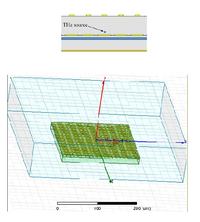fsky
Newbie level 4
Hi all, Can anybody explain what the surrounding sphere is meant to be and how the value for that is considered?
The freq. band of my simulation is 1-6 THz and the paper says the source is a half wavelength electrical Hertzian dipole...
The freq. band of my simulation is 1-6 THz and the paper says the source is a half wavelength electrical Hertzian dipole...
